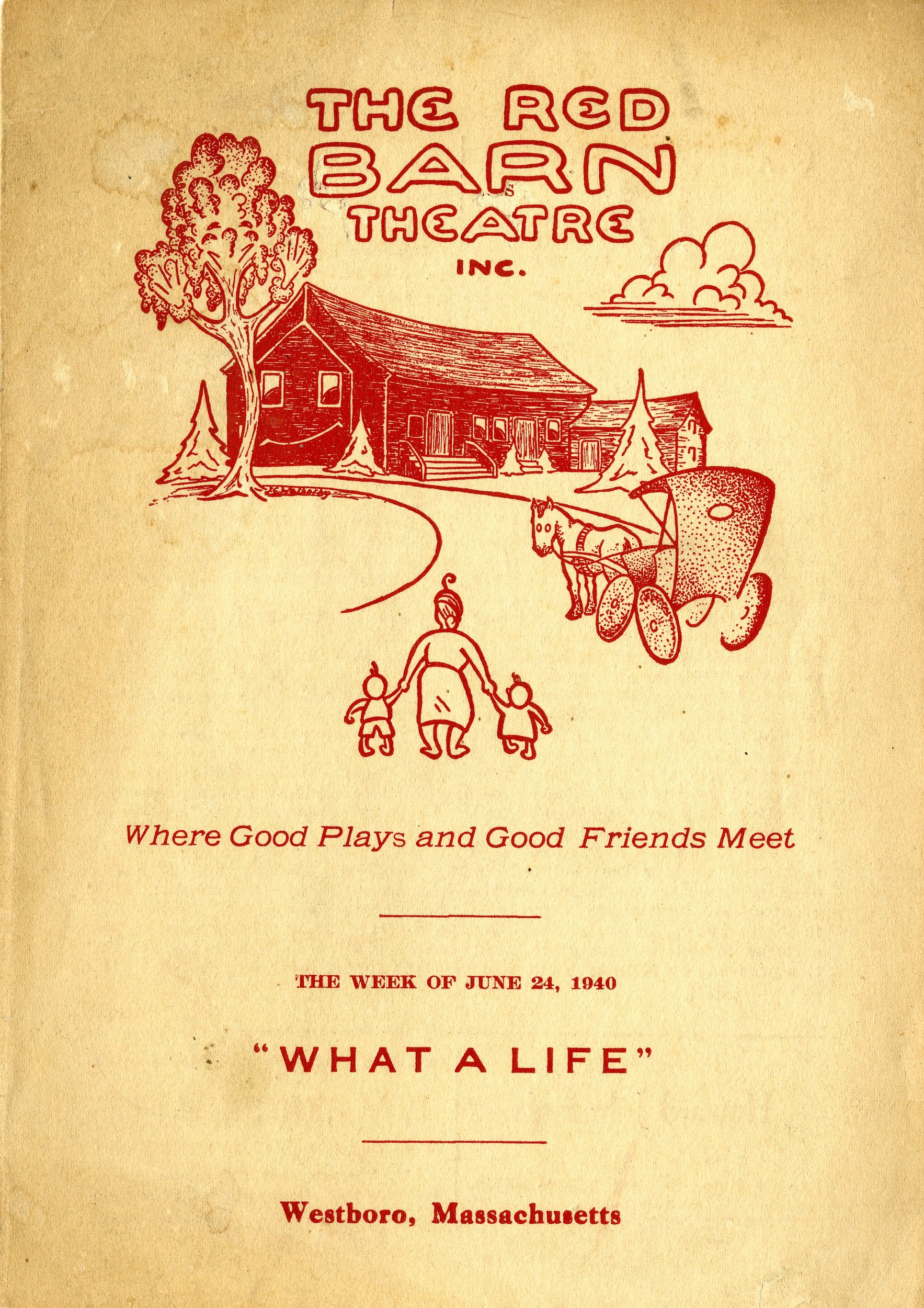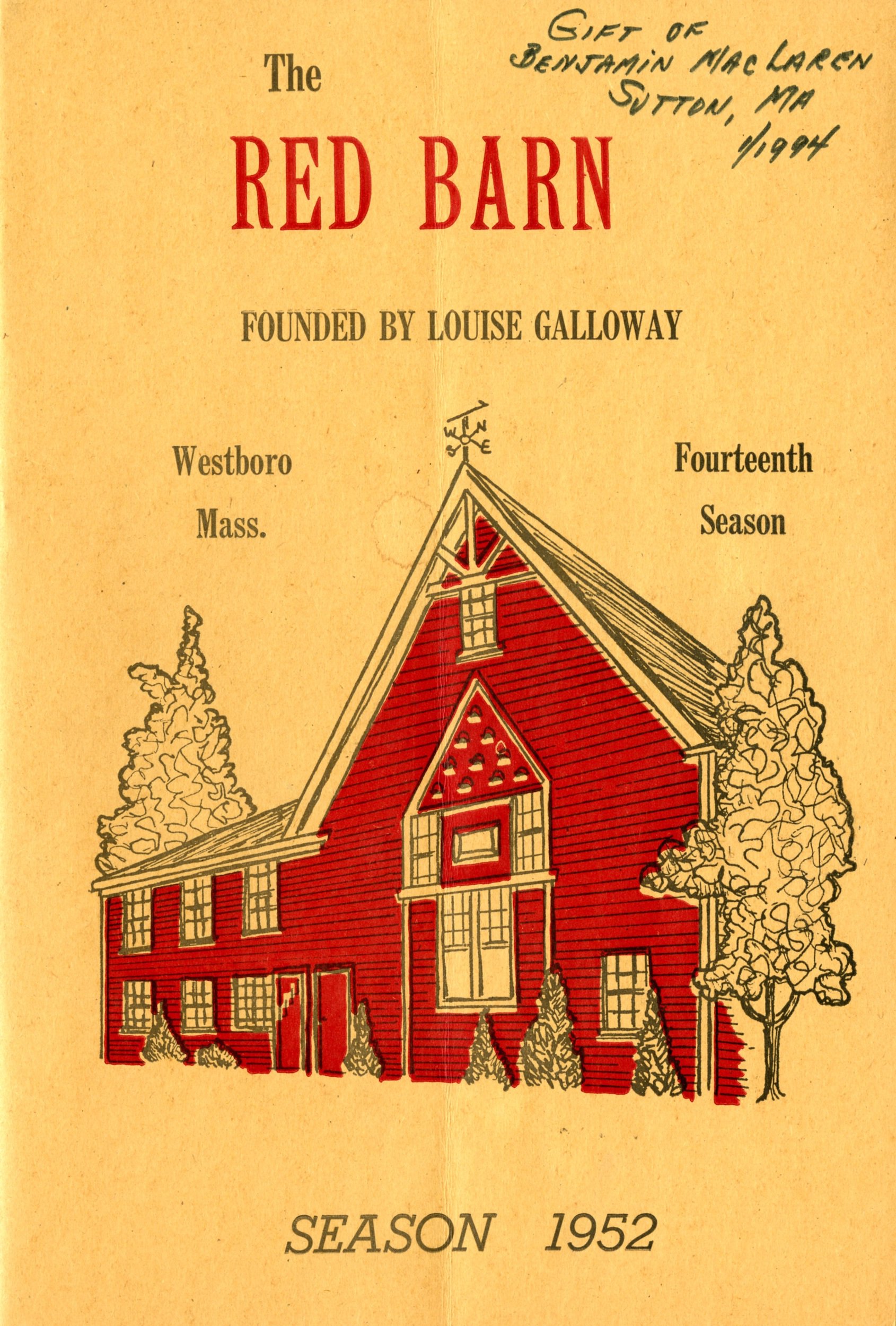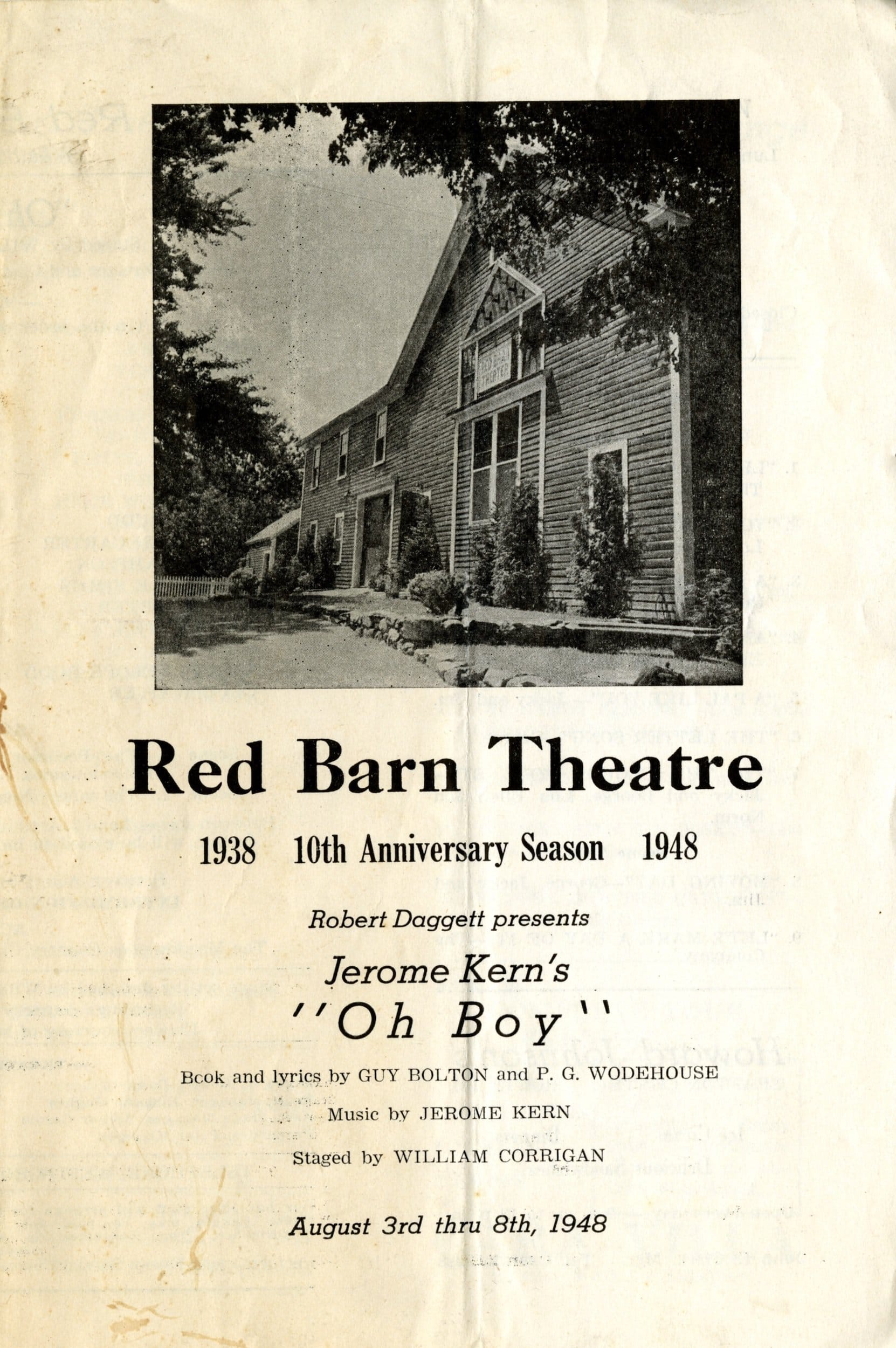
WESTBOROUGH – The curtain rose to thunderous applause in the old cow barn. It was July 2, 1938, the opening night of the first season of the Red Barn Theatre.
To the delight of local drama fans, Alan Holmes of Auburn had converted the 1760 barn at the crossroads of Routes 9 and 30 into a summer playhouse. From 1938 to 1958, audiences enjoyed a different play every week for 26 weeks. The theater’s first producer/director was Louise Galloway, a Broadway personality.
To attract regional audiences, the Red Barn Theatre advertised in the New York Times, competing with 89 other summer stock theaters on the East Coast’s “Straw Hat Circuit.”
Most of the summer stock actors were professionals hoping to build their careers. They brought their production to a different playhouse on the circuit each week. In the lineup were popular musicals such as “South Pacific,” classic plays such as “The Late George Apley,” and melodramas such as “Ten Nights in a Bar Room.”
A handful of local extras rounded out the cast in Westborough, including Norm Gebo and Mary Emily Libbey, a founder of the Westborough Players Club.

Mrs. Connie Krull Hutt remembers the Red Barn Theatre and the people it attracted. She recalls an acquaintance who decided to vacation at Cuniff’s Lodge in Westborough because the town had a beach at Lake Chauncy and the Red Barn Theatre for lively entertainment.
In the early days, everyone could enjoy the shows since the seat prices were only 85 cents or 55 cents. No matter the location, you could reserve the same seat for the entire season. The Red Barn Theatre’s slogan was “Where good plays and good friends meet.”
Since curtain was at 8:30 p.m., playgoers could add dinner to their evening on the town. To lure diners, the Merrie M at 50 West Main advertised, “Enjoy a real home-cooked dinner before the show.”
Hutt saw her first Red Barn production in the 1950s, just before she left for college. Her father, Leonard Krull — a founder of Bay State Abrasives — was from a strict Dutch Reformist background.
“When we were young, he didn’t allow his three daughters to see any plays or movies that might have questionable language or morals,” recalled Hutt.
The Red Barn play she saw was “All about Papa.”
“That play certainly seemed like our family,” commented Hutt. “I was fascinated to see myself and our family life portrayed on the stage.”
During the 1940s and 1950s, actors such as John Forsyth were launched at the Red Barn Theatre before moving on to Broadway, movies, and television. Emmy-winner Werner Klemperer, who later played “Colonel Klink” on “Hogan’s Heroes,” was married at St. Luke’s Church one summer.

Over the years, the Red Barn ranked as the third most popular summer stock theater on the East Coast. It was renowned for being the first summer playhouse to open―and the last to close―in the nation.
However, on April 29, 1958, a fire caused by a faulty refrigeration unit leveled the playhouse. All the stage props, costumes, and antique theatre posters were destroyed. Eventually on the site Tom McCabe opened Tom Foolery’s restaurant, which later became The Chateau restaurant.
Although the excitement of summer stock theater is gone, Westborough’s residents can delight now in the music, dance, and arts of many diverse cultures.
















